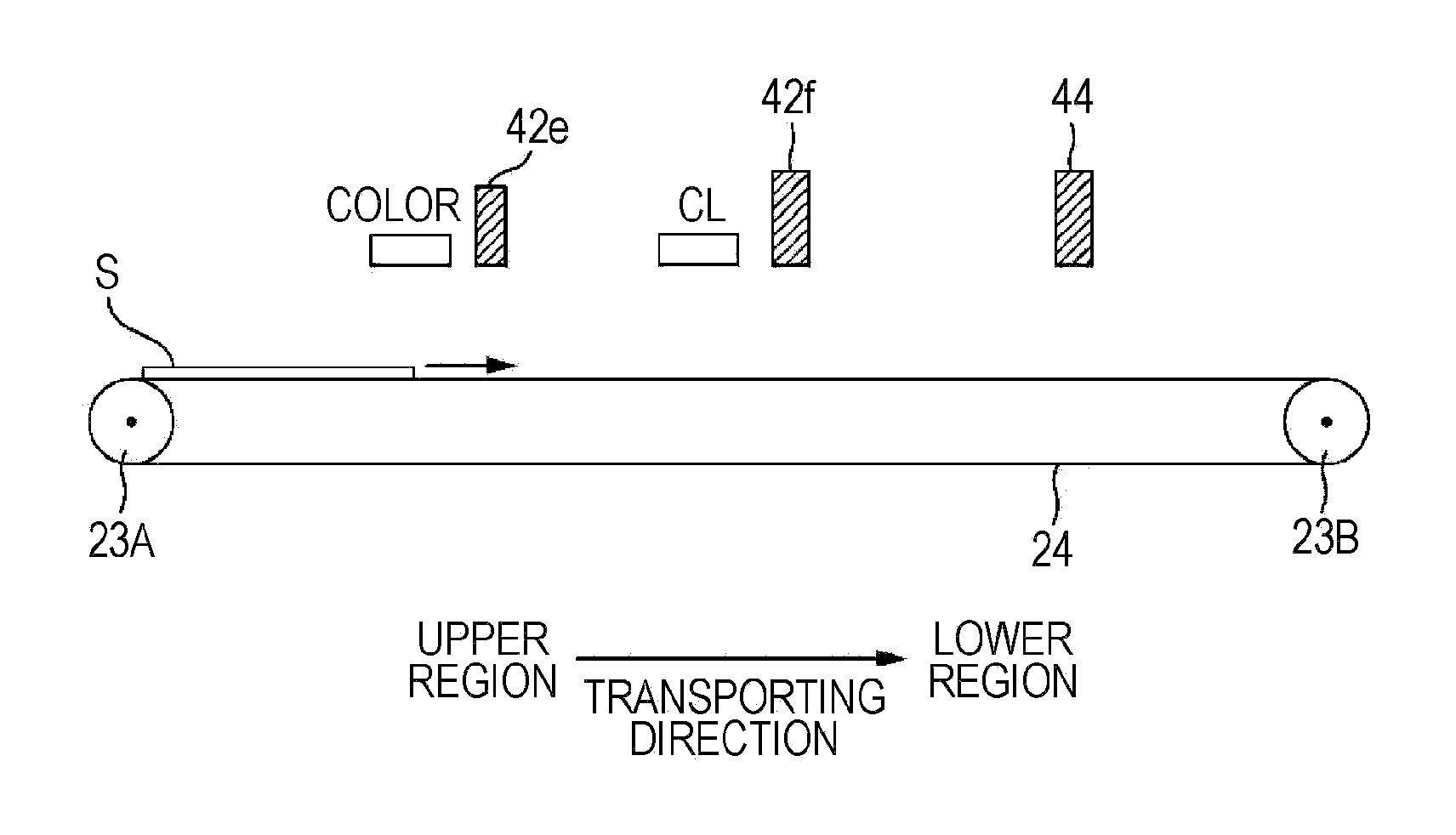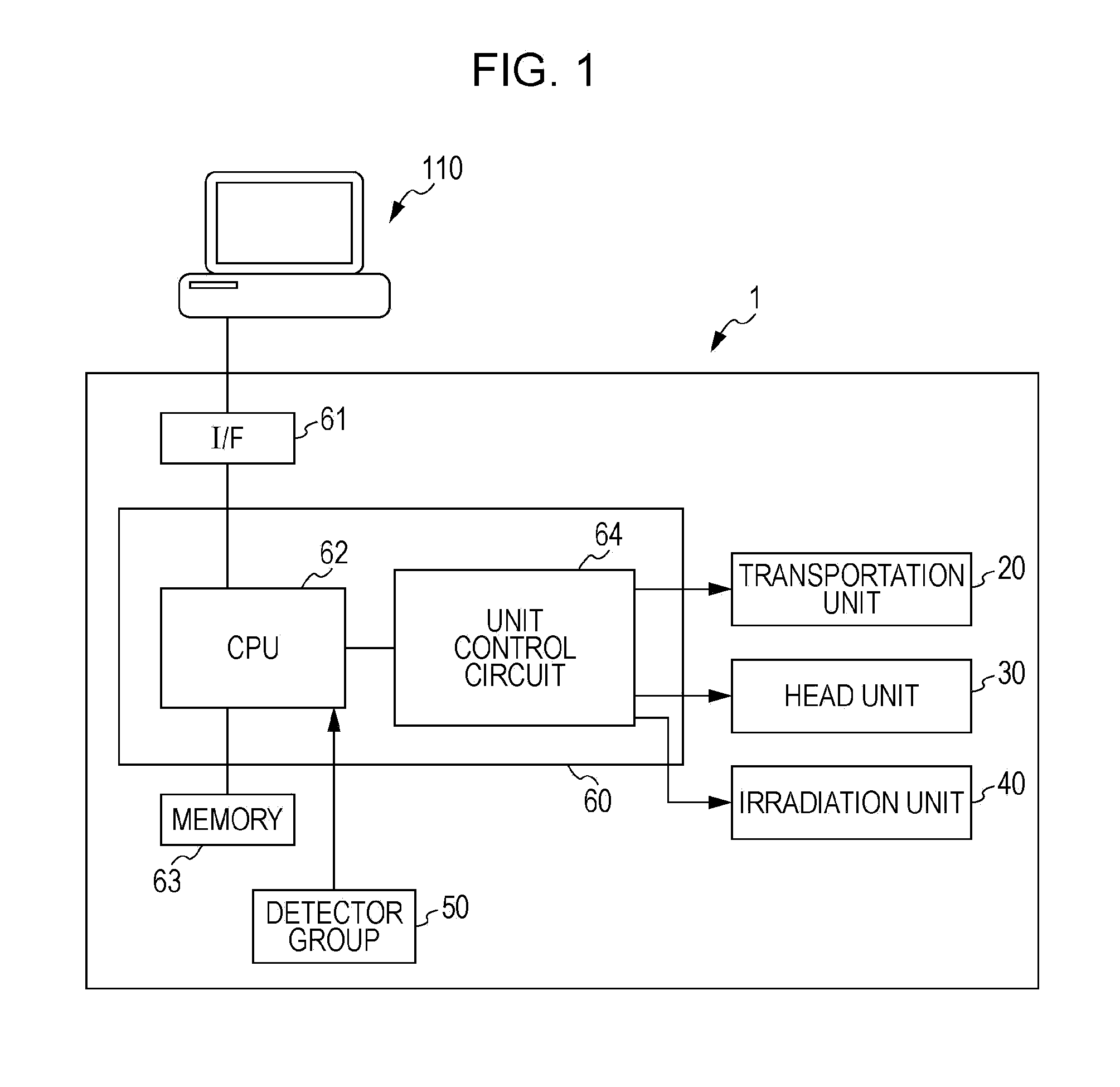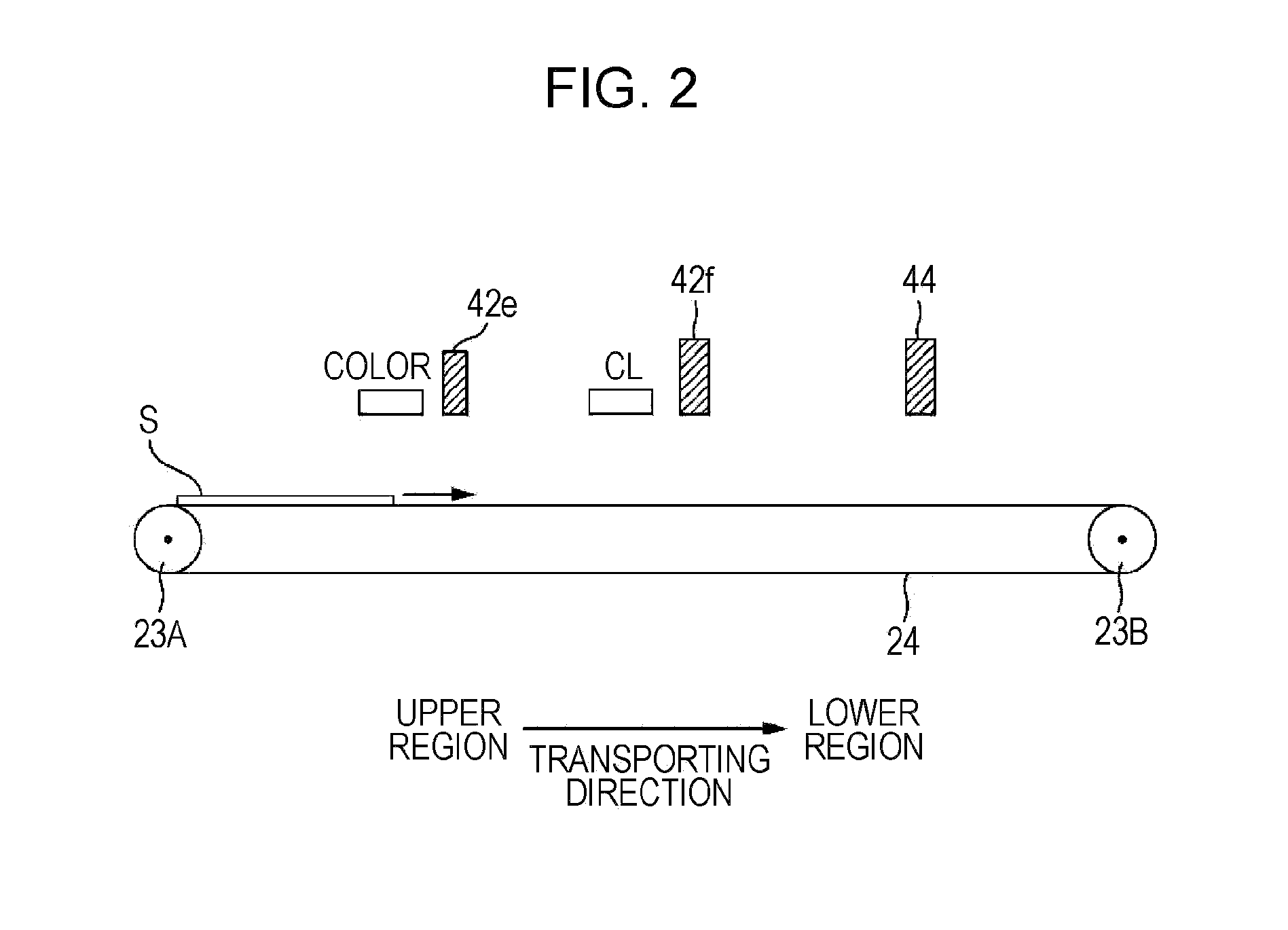Ink composition for ultraviolet curable ink jets, ink jet recording apparatus using the same, ink jet recording method using the same, and ink set
a technology of ultraviolet curable ink jets and compositions, which is applied in the direction of inks, printing, other printing apparatus, etc., can solve the problems of extremely degraded curing properties, problems in the obtained ink, and degraded curing properties, and achieve excellent curing properties of ink
- Summary
- Abstract
- Description
- Claims
- Application Information
AI Technical Summary
Benefits of technology
Problems solved by technology
Method used
Image
Examples
examples
[0167]Hereinafter, the embodiments of the invention will be described further specifically using examples and comparative examples, but the embodiments are not limited only to the examples.
Components Used
[0168]Components used in the examples and comparative examples below are as follows:
[0169]FASTOGEN BLUE (color index name: pigment blue 15:4, product name manufactured by DIC Corporation, abbreviated as cyan in the tables)
[0170]SYMULER FAST YELLOW (color index name: C.I. pigment yellow 180, product name manufactured by DIC Corporation, abbreviated as yellow in the tables)
[0171]MICROLITH-WA Black C-WA (color index name: C.I. pigment black 7, product name manufactured by BASF, abbreviated as black in the tables)
[0172]CROMOPHTAL PinkPT (SA) GLVO (color index name: C.I. pigment red 122, product name manufactured by BASF, abbreviated as magenta in the tables)
Pigment White 06 (titanium dioxide, product name manufactured by Mikuni Color, abbreviated as white in the tables)
Dispersant...
examples 1 to 19
, Reference Examples 1 and 2, Comparative Examples 1 to 8
[0188]Firstly, the pigment, dispersant, and VEEA or PEA as described in Tables 1 to 3 below were mixed so as to produce the composition (unit: % by mass) as described in each of the tables, thereby preparing a pigment dispersion liquid. Next, other components as described in each of the tables below were added to the prepared pigment dispersion liquid so as to produce the composition (unit: % by mass) as described in each of the tables, and the mixture was stirred using a high-speed water-cooled stirrer, thereby obtaining an ink composition for ultraviolet curable ink jets of each of the colors (cyan, magenta, yellow, black, white, and clear). Meanwhile, in each of the tables, blank cells signify no addition.
TABLE 1ExamplesItemsMaterial12345678910111213Pigment dispersionCyan2.22.22.22.2liquidsYellow3.13.13.1Black2.02.02.0Magenta4.04.04.0WhiteAmine-0.71.51.50.70.71.51.50.71.01.51.50.70.7baseddispersant AVEEA12.114.516.010.65.61...
PUM
| Property | Measurement | Unit |
|---|---|---|
| light emitting peak wavelength | aaaaa | aaaaa |
| diameter | aaaaa | aaaaa |
| mass | aaaaa | aaaaa |
Abstract
Description
Claims
Application Information
 Login to View More
Login to View More - R&D
- Intellectual Property
- Life Sciences
- Materials
- Tech Scout
- Unparalleled Data Quality
- Higher Quality Content
- 60% Fewer Hallucinations
Browse by: Latest US Patents, China's latest patents, Technical Efficacy Thesaurus, Application Domain, Technology Topic, Popular Technical Reports.
© 2025 PatSnap. All rights reserved.Legal|Privacy policy|Modern Slavery Act Transparency Statement|Sitemap|About US| Contact US: help@patsnap.com



